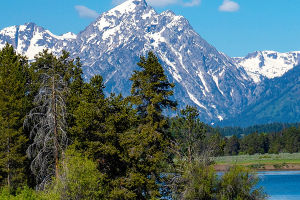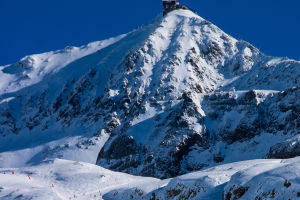Plateaus are areas of high elevation with flat tops that extend from a few square miles to thousands of square miles.
These geological formations usually have steep slopes but, in some cases, are surrounded by mountains. They result from a variety of causes, such as volcanic activity, erosion, or tectonic movement.
1. The Tibetan Plateau, the largest plateau in China and the world, is known as the "Roof of the World" and the "Third Pole."
It is bounded by the Transverse Range to the east, the Himalayas to the south and west, and the Kunlun Mountains to the north. It includes all of China's Tibet Autonomous Region and parts of Qinghai, Xinjiang Uyghur Autonomous Region, Gansu, Sichuan, and Yunnan Provinces.
Additionally, it spans parts or all of Bhutan, Sikkim, Nepal, India, Pakistan, Afghanistan, Tajikistan, and Kyrgyzstan.
2. The Colorado Plateau, the only desert plateau in the United States, is located in the southwestern part of the country, with the Colorado River running through it.
The erosion caused by the Colorado River and its tributaries has formed several deep canyons within the Colorado Plateau. Its name originates from the Spanish word "Colorado."
Despite its seemingly desolate nature, this plateau boasts a unique alluvial landscape that attracts those who enjoy pushing their limits. With an average altitude of over 1,930 meters, this plateau was formed by the movement of the Earth's crust. One of its most remarkable features is the Grand Canyon, a brilliantly colored canyon shaped by billions of years of erosion by the Colorado River.
3. The Deccan Plateau, formed by volcanic activity, covers almost all of central and southern India. It is flanked by the mountainous Eastern Ghats and Western Ghats.
Rich in minerals, the plateau has been a significant center for mining activities, including the extraction of diamonds, gold, iron, and mica. The region is irrigated by rivers such as the Krishna and the Koveli, which originate from the plateau at an altitude of about 610 meters.
4. The Kimberley Plateau, located in the northeastern part of Western Australia, encompasses the King Leopold and Caboid mountain ranges, while the Timor Sea borders its western and northern parts.
The southern and eastern regions are surrounded by the Fitzroy and Ord rivers, respectively. Covering an area of about 420,000 square kilometers, this plateau spans the northern part of Western Australia.
It is predominantly composed of sandstone, formed by river systems and volcanic activity. Culturally and historically significant to the Aboriginal people, this plateau holds great importance.
5. The Mexican Plateau, which covers 5/6 of the country, extends from the Mexican-American border in the north and is surrounded by the Sierra Madre Mountains to the east, west, and south, encompassing an area of 1.2 million square kilometers.
The outer edge of the plateau is marked by steep mountain ranges, while the inner side gently stretches out, resembling a square table rising above the coastal plain on both sides. Due to its distinctive geomorphological form, it is referred to as a "Mesa."
Mexico's terrain is mainly mountainous and highland, collectively known as the Mexican Highlands, earning Mexico the reputation of being the country of highlands.
There are numerous highlands worldwide, each boasting magnificent scenery and its own unique charm.
In these beautiful natural destinations, one can find relaxation and the opportunity to explore the mysteries and wonders of nature, gaining a deeper appreciation for the harmonious coexistence of humans and the natural world.


